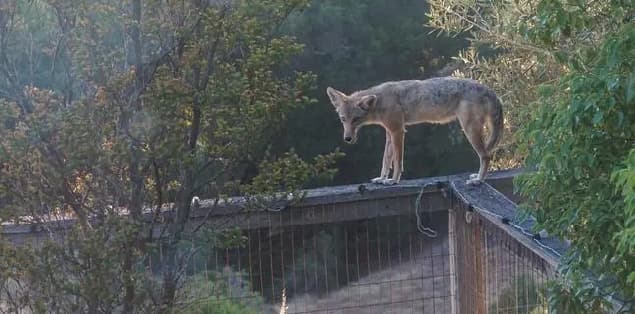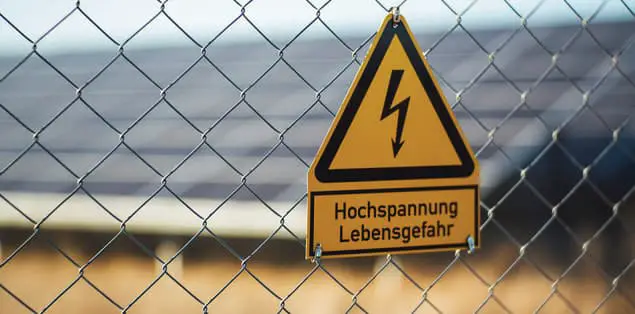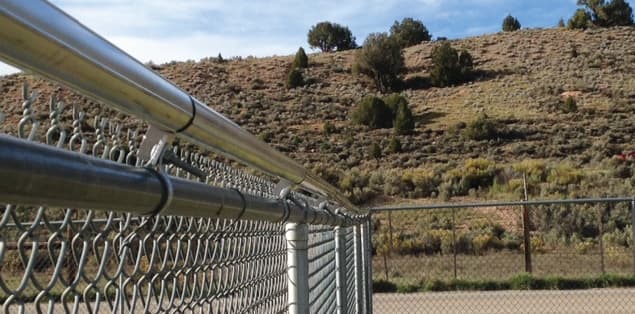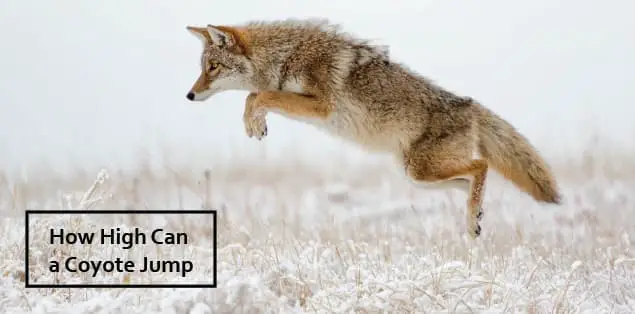Have you ever wondered “how high can a Coyote jump?” Coyotes appear to be all over the place. You can spot them in the woods, snooping around farms, and scavenging through the garbage in cities. Coyotes can get into areas they aren’t supposed to be in, such as over a fence and into someone’s backyard, which is why they are so annoying.
People have reported coyotes stealing their pets from their backyards, sparking widespread panic. It’s always distressing to read of coyote encounters involving pets. Therefore, we need to understand the natural behavior of coyotes to protect ourselves and our pets.
It’s becoming increasingly vital to take precautions and reduce the risk of a coyote encounter as the number of rural, suburban, and urban coyotes grow. You can spot many coyotes in metropolitan areas of Southern California.
This post will answer your burning questions about coyotes and some steps you can take to protect your pets against coyotes. So let’s get to the nitty-gritty now.
Can Coyotes Jump Fences?

Yes, they can. Coyotes can leap six-foot fences with ease. They are, in fact, capable of jumping three feet in the air.
Small animals such as rodents, rabbits, and other animals are preyed upon by coyotes, which hunt them by trailing them down and then pouncing. However, if you want to safeguard your yard and pets like cats and dogs, you’ll need a fence at least 8 feet high and made of a smooth material that won’t permit coyote traction.
Can Coyotes Climb Trees?
No, coyotes cannot climb trees. They lack the physical attributes required to climb a tree. They can’t wrap their forelimbs around tree trunks, and their claw placement isn’t anatomically correct or sharp enough to dig into a tree and allow them to climb.
They can only climb a tree if the branches are low enough to the ground and they are looking for food. A coyote has no chance of climbing a tree if its branches are too high off the ground.
How High Can a Coyote Jump?
Coyotes are incredibly agile and have a natural ability to jump and climb over obstacles. Coyotes can jump approximately four feet in the air. They can scale a five- to six-foot fence with relative ease by using their legs. Taking running leaps, they can usually jump over fences higher than that.
Coyotes may easily jump a 5 to 6 feet tall fence without even touching the fence. You would be surprised to know that coyotes can jump and climb fences up to 14 feet high by jumping, clutching the top of the fence with their front legs, and then using their rear legs to help them scale barriers.
Coyotes have an interesting trait: they can jump as high as they desire. They don’t need to sprint to clear a six-foot barrier; they can jump straight up and over the top. It is difficult for individuals trying to keep coyotes out of their yards because even a high fence may not be enough to keep them away.
Will Coyotes Jump a Fence to Get a Dog?
If the dog is small enough, a coyote may be able to get to it by jumping a fence. Small dogs and pets are easy prey, but if they bark loudly enough, they will frighten them away, says our-dogs.info.
Dogs have been used throughout history to ward off predators. Coyotes are frequently scared of larger dogs, and many dogs can smell coyotes and react accordingly. If the dog is larger, the coyote will not want to engage in a fight because they usually go for quick kills.
Do Coyotes Dig Under Fences?
Digging under many kinds of fences and barriers is a well-known skill of coyotes. Coyotes are notorious for preying on domesticated animals, such as hens, goats, and sheep. Therefore this can be a problem for those who keep livestock on their property. Even though a fence cannot be coyote-proofed, a few precautions can prevent the majority of coyotes from crawling under and tunneling under it.
- Dig a 6-inch-deep hole around your property on the outer side of your fence. Extend the hole 15 inches beyond the fence. Keep the soil that you remove close to the fence.
- Attach a galvanized wire-mesh apron to the bottom of the fence like you would the posts and bury it in the hole you excavated. Bend your galvanized wire-mesh apron, so it stretches straight outward, making an L shape after it reaches the 6-inch depth of the hole.
- Fill the hole you dug along your fence with the earth you dug out to make it. The galvanized wire-mesh apron will be invisible to coyotes. When they try to crawl or dig under the fence, they will quickly learn that they can only get as far as the apron.
- Make sure your fence is secure by installing either a wire-mesh overhang or a roller-type device that can be attached to the top of the fence. It will ensure that your bar is safe and secure. Each strategy adds a layer of defense against coyotes attempting to leap over the wall.
- To deter coyotes from jumping over the fence, the overall height of the fence plus the overhang must be 5 1/2 to 7 feet.
What Kind of Fence Will Deter Coyotes?
Fencing is one of the most effective tools for protecting our pets and preventing intruders like coyotes from entering our yards. Fencing creates a barrier between exterior risks and the goods inside while also offering a layer of protection.
We have compiled a list of different types of fences you can install which can take care of the coyote problem.
Tall Fence
A coyote’s jumping ability is exceptional. As a result, the first step in creating a fence that deterrents coyotes is to make it tall. The fence should at least be as high as 4 feet. You’ll need to use it in conjunction with another coyote-deterrent product because a four-foot fence isn’t usually enough to keep them out.
Instead, construct a six-foot fence to keep coyotes out of your yard. However, you should consult with your homeowners’ association first, as some may find six feet of height an issue. If you reside in a rural region and try to safeguard livestock such as sheep, things are different. As a result, an eight-foot fence is something you might want to think about in that situation.
Wire Mesh Fence
A wire mesh fence uses steel wires. Wires soldered together form a strong mesh. Property owners frequently substitute wire mesh fencing for high-tensile wire fencing. Wire mesh works better because it’s more sturdy, and animals can’t get in between the wires. It’s perfect for vast estates, particularly in rural locations.
Fences like this one keep coyotes away from the property. Coyotes aren’t going to be able to get past the wire mesh. Check to see that the weave isn’t too wide so that they can grab hold of the fabric. There is always a way to get around a fence if you’re determined enough. As a result, do not place a wooden rail directly on top of the fence.
Roll Bar Fence Topper
A roll bar topper is an excellent addition to any fence. Two different-sized PVC pipes are linked together by a heavy-gauge wire, one of which is smaller. The roller bar is formed by sliding a larger pipe over this arrangement. The fence’s top rail is supported by this roller bar, which is joined to the posts above it.
As the name implies, Coyote rollers work by rolling the larger pipe over the smaller tube. Most likely, the coyote will use its paws to push itself over the top edge of your fence. Instead of the immovable top rail, it’ll run against the roller bar and retreat to its side of the fence.
Top rails and roller bars don’t look all that different. As a result, they must adhere to the HOA’s rules.
Vinyl Fence
Compared to wood, vinyl fences are a relatively new invention. Vinyl fences that look like wooden fences are available, as are many other kinds. A PVC privacy fence could be an excellent alternative to wire mesh for residential coyote-deterrent fencing.
When compared to wood, PVC is a superior material. Due to its unpleasant taste, coyotes won’t bother trying to eat it at all. They’ll also be unable to scale its smooth surface.
Coyotes will not be able to observe the animals you have in your yard if you put up privacy fencing. Similarly, privacy fences are typically six to eight feet tall, which serves as an additional deterrent.
Wire Mesh L-Footer Fence
Coyotes will try to tunnel their way under fences when everything else fails. You may prevent this by digging six to eight inches into the earth using a wire mesh fence. You can use a wire mesh L-footer for different fencing.
L-footers use the same bulky mesh that a fence uses. After a foot of digging into the ground, they expand outward at 90 degrees. The resulting foot will thwart coyotes attempting to dig under your fence. There will be a gap between the foot and the ground where coyotes dig.
Can Coyotes Climb Chain Link Fences?
Yes, pretty quickly. Coyotes are small, intelligent, and relentless. Most fences and garden walls, therefore, will not keep them out. A reasonable rule of thumb is that if a cat can get through or over something, so can a coyote.
A chain-link fence should be at least six feet tall and extend to 18 inches into the ground to prevent coyotes from just burrowing under it. The barbwire or Coyote Roller on top of the fence will prevent them from climbing over it. Any fence gates should close firmly and with minimal gaps – your fist should not be able to pass through.
How to Coyote Proof Your Fence?
Because of their sharp senses, coyotes can easily detect an easy meal on your property and cause significant damage. Therefore, if you want to keep them out of your territory, here is a step-by-step strategy.
Putting Up the Fence
It would be best if you constructed your walls high and deep. We suggest that a coyote-proof fence be at least 8 feet tall and extend 18 inches below ground level. Strong coyotes can scale 6-foot fences, but that’s enough for a coyote. The toppers we will be adding will keep them away from the fence.
Coyotes are excellent diggers. They will dig under your fence if they think they can. Make sure your barrier is tall and extends well into the ground.
When it comes to coyotes, fencing material doesn’t matter. The biggest issue is what is permitted in your neighborhood, especially if you have an HOA. To prevent fines, always contact your HOA before permanently improving your property.
Next, we’ll go over three alternatives for adding to a fence to keep out coyotes: barbed wire, electric fence, or coyote rollers.
Putting Barbed Wire

Rural and industrial areas are typically allowed to use barbed wire. Consider building an extender that goes along the top of the fence and faces outward. Coyotes will be unable to climb over these.
You can run an electric line through them or cover them with more fencing.
Coyotes aren’t recognized for being able to climb backward. So whatever you put on the arms, the extension will keep a determined coyote from scaling the fence.
Putting Electrical Fence

Add a new electric fence or adjust the one you already have. Coyotes will try to tiptoe through holes in electrified fencing, so it doesn’t have to be exceptionally high.
Because coyotes will try to dig underneath the barrier, it’s especially crucial to electrifying the bottom of the fence.
Putting Coyote Rollers

With the help of rollers, you can stop coyotes from climbing over fences. With their back paws pressed against the fence, they prefer to jump or climb over the top of the barrier.
You can keep coyotes from obtaining a stronghold on your fence with rollers, which prevents them from attempting to breach into your yard. It is both more humane and just as effective compared to barbed wire.
If you don’t want to spend the money, you can always make your own using PVC pipe and a drill.
Besides these, there are some other ways to coyote proof your property. For example, you might be wondering how to keep coyotes away from your hens and other livestock.
We will give you some pointers for keeping coyotes away from your prized pets apart from cats and dogs.
- Don’t leave the bird feeders out overnight, pick up food waste, feed your pets indoors, store pet food in a lockable garage or shed and leave nothing out which may attract coyotes.
- If you have chickens, you need to have a covered run to protect them from coyote attacks. In this scenario, the best defense is a good defense.
- All canines use scents to identify their territory and warn intruders of the dangers if they breach the border. A coyote’s greatest fear, after humans, is coming face to face with a wolf. To fool pesky coyotes into believing a more prominent and meaner predator has already claimed your area, mark your boundaries with wolf urine.
- You can also use solar lights, which turn on automatically at sundown and flash continuously throughout the night to keep coyotes away. The lights work best when placed at the coyote’s eye level in all four directions (20-30 inches off the ground).
Final Words – How High Can a Coyote Jump?
We hope that this post has offered you some ideas for dealing with unwelcome canine guests. Once you’ve got the fence up, ensure it’s secure and keep adding to it until you’ve got the best possible coyote protection.
If you’ve done everything you can to keep them from returning, the chances of them trying to get back in are slim as long as you keep on fortifying and do not let any chinks develop in your armor; we mean your fence!
Keep safe!
